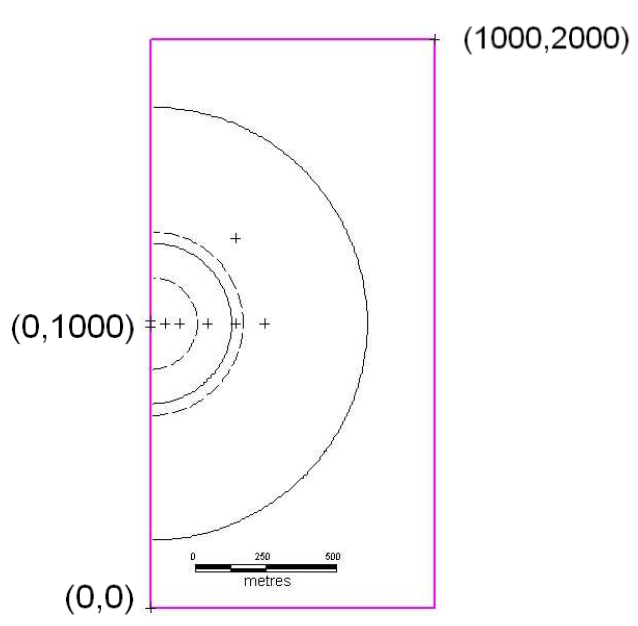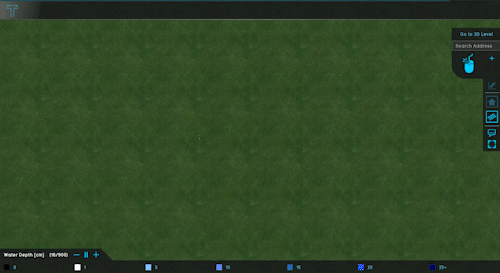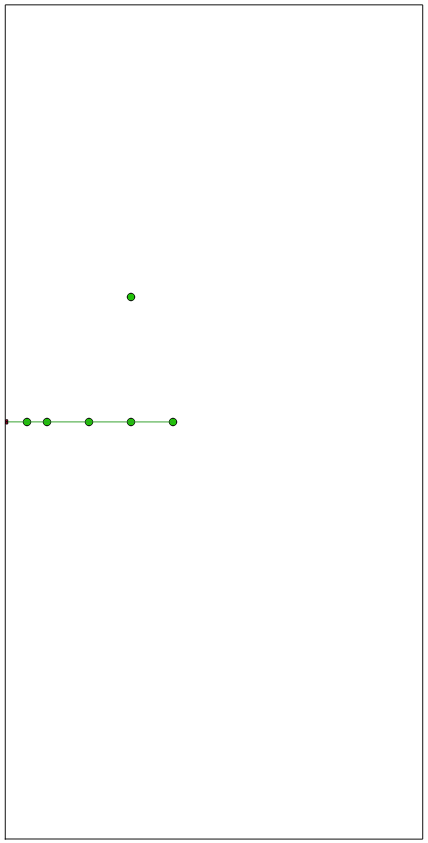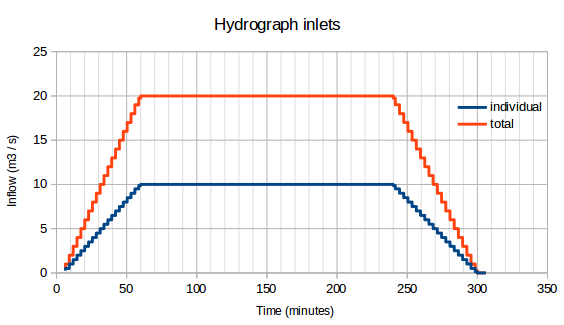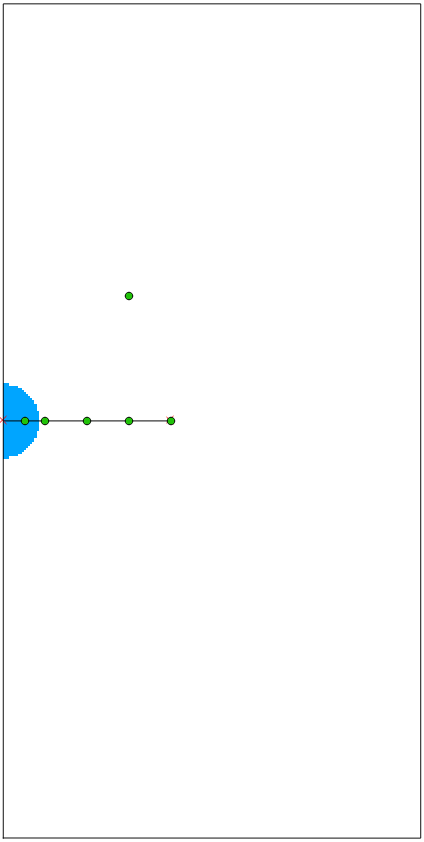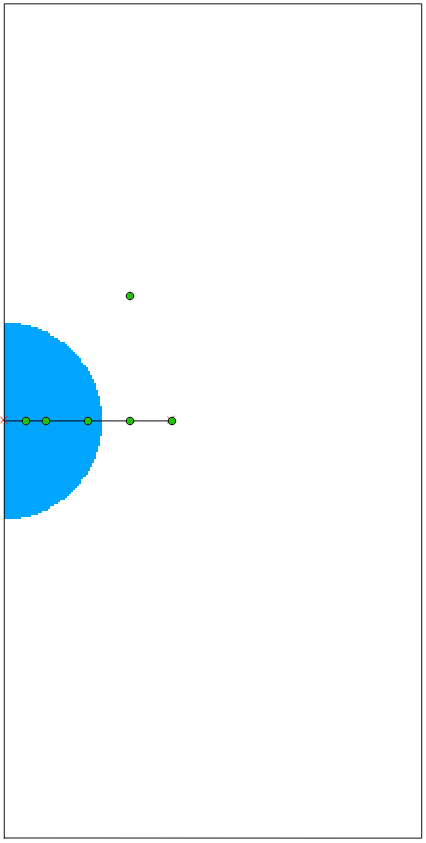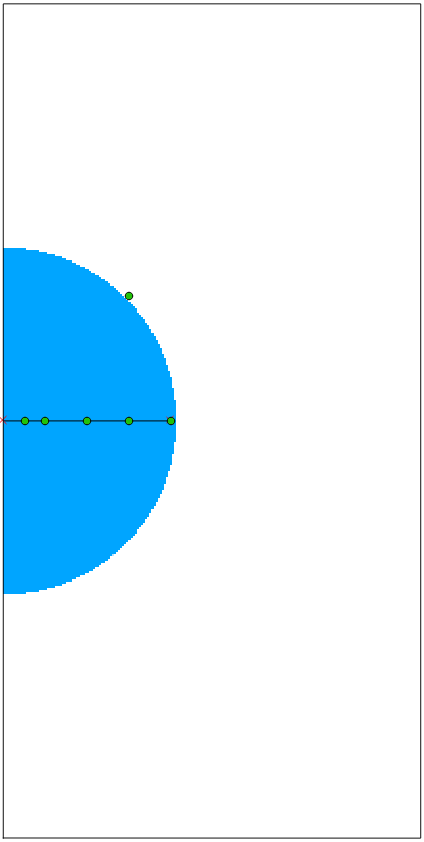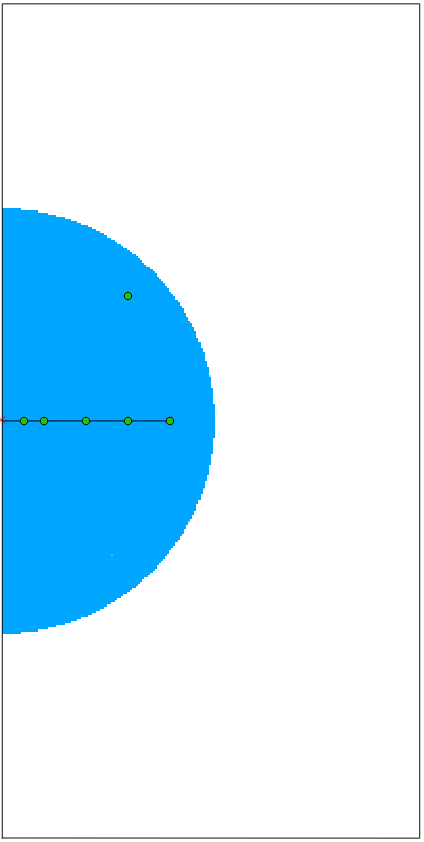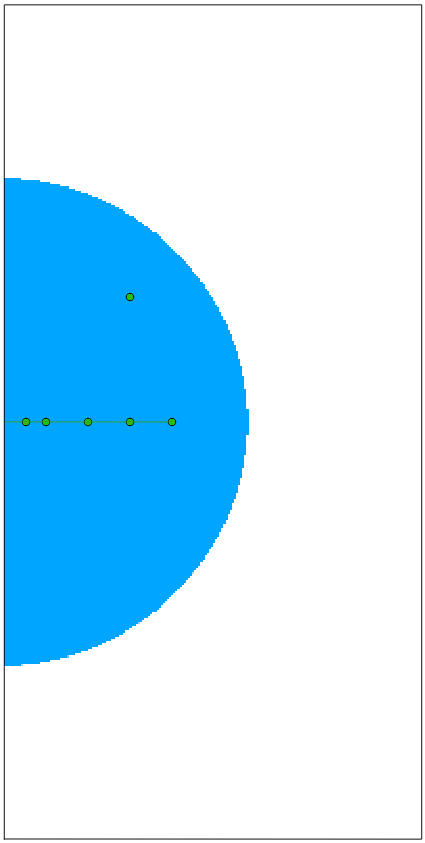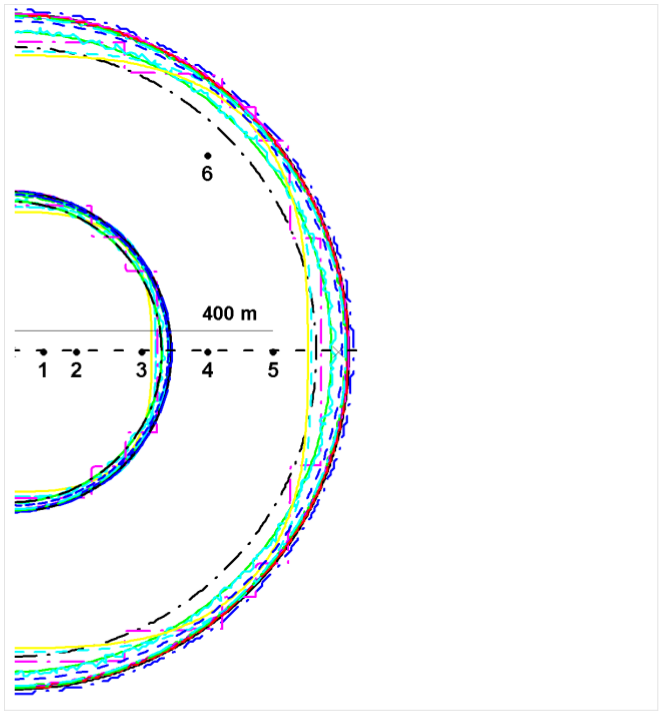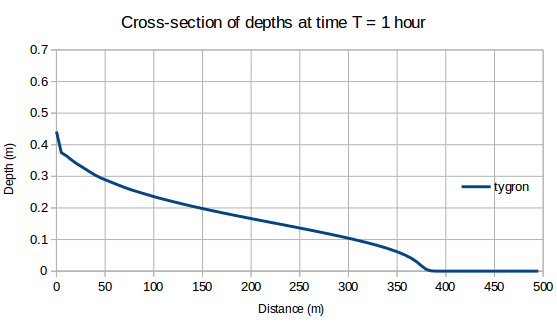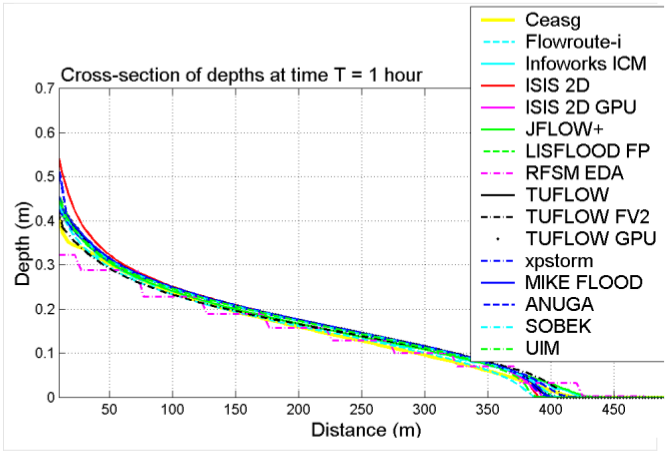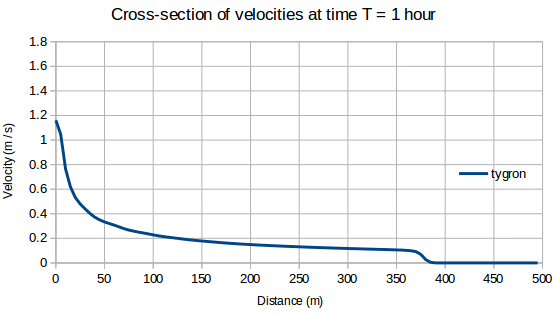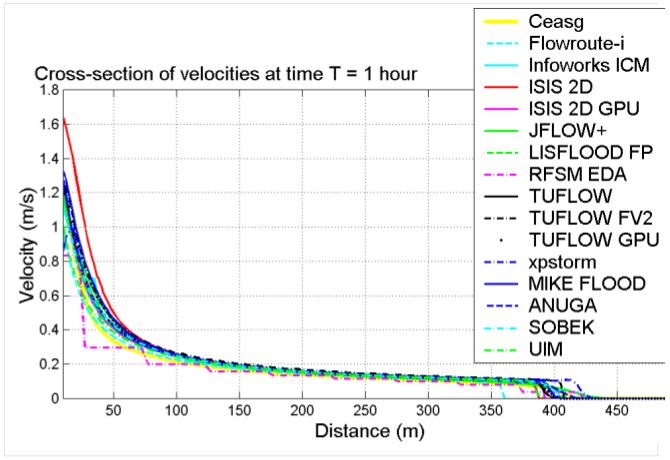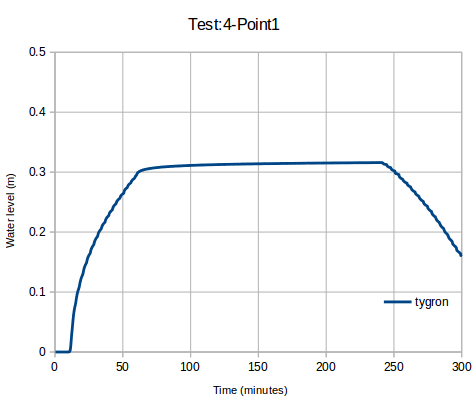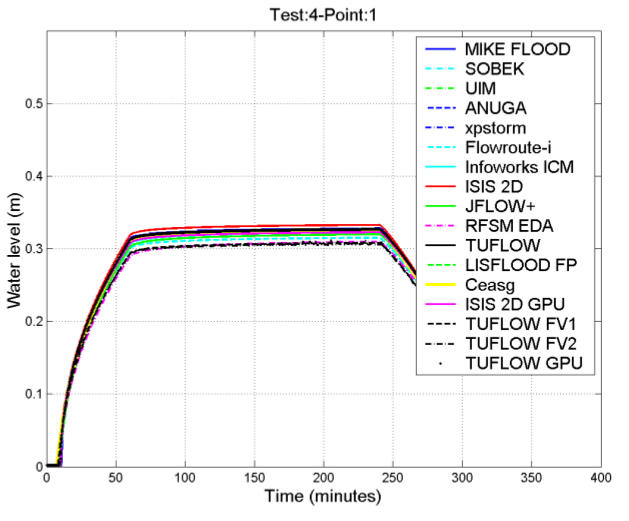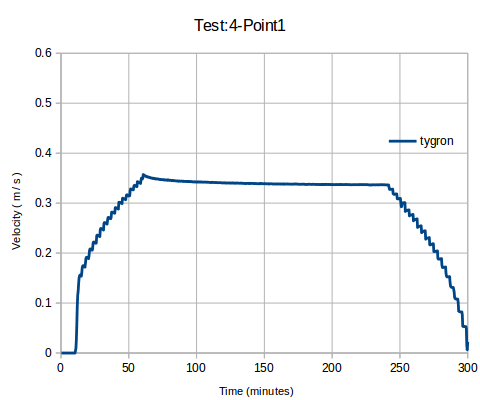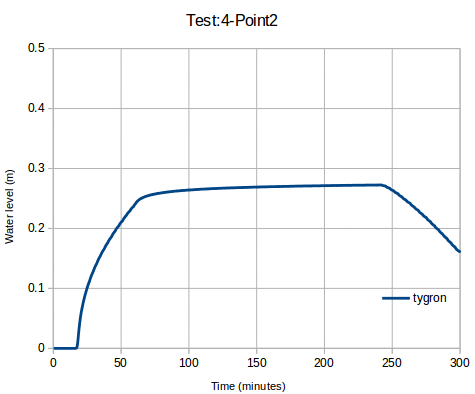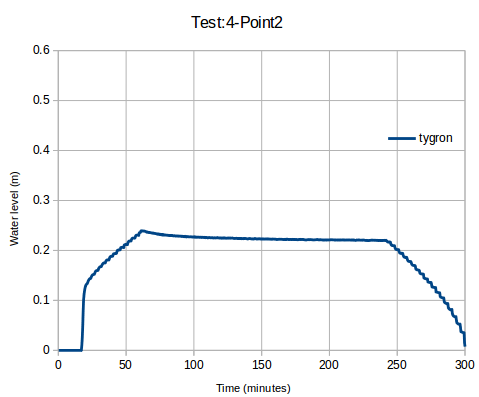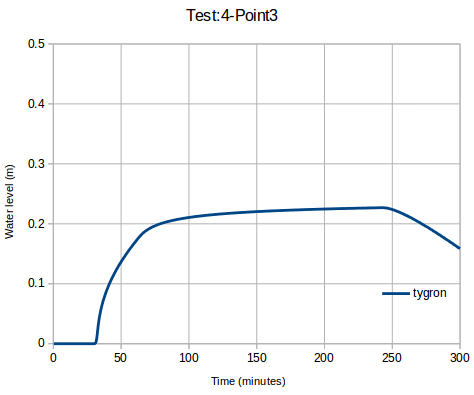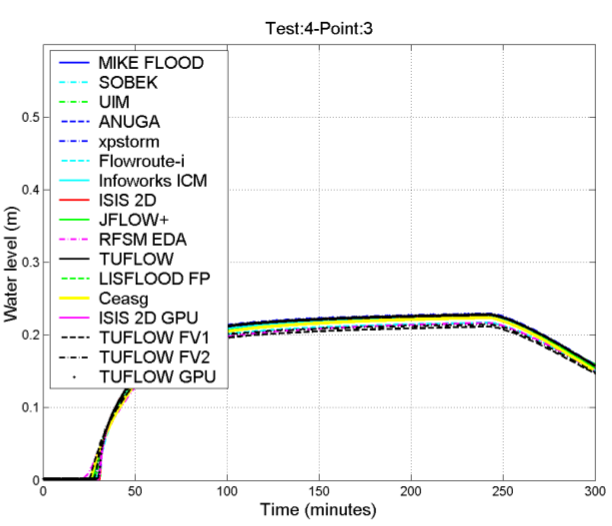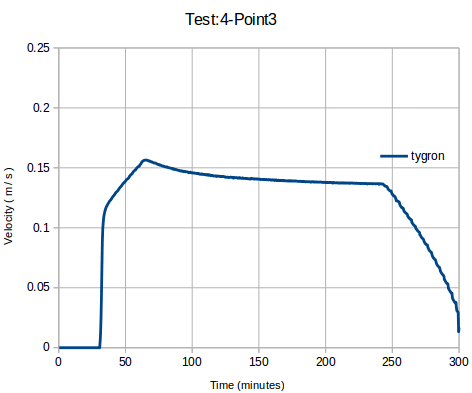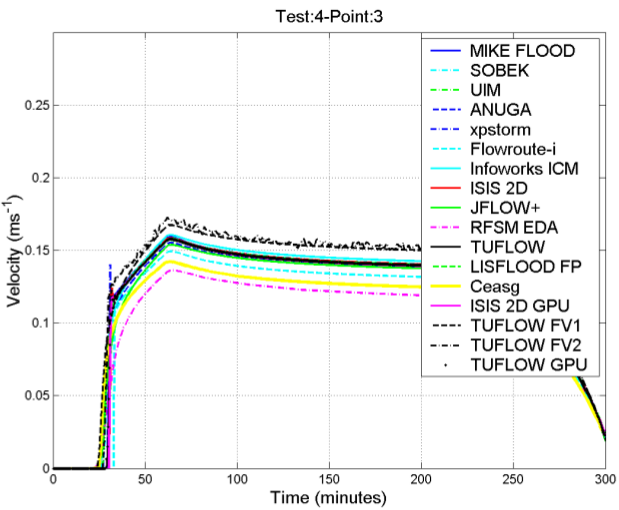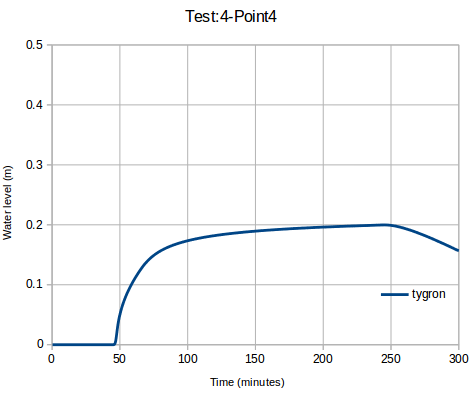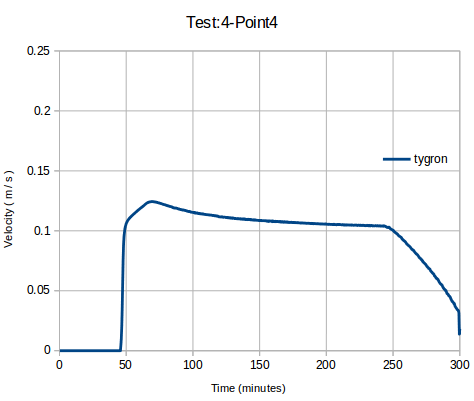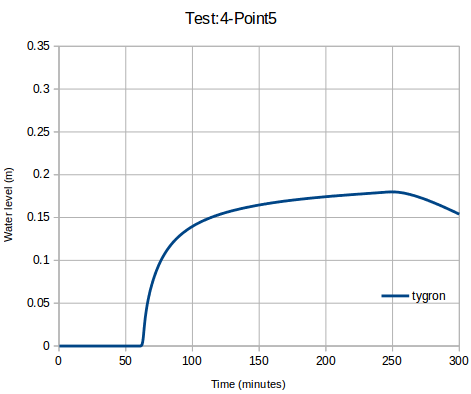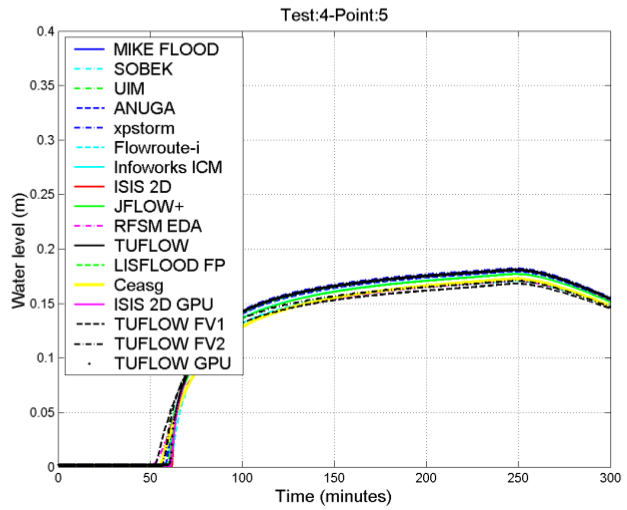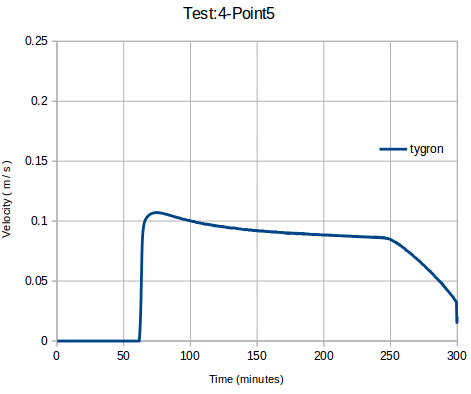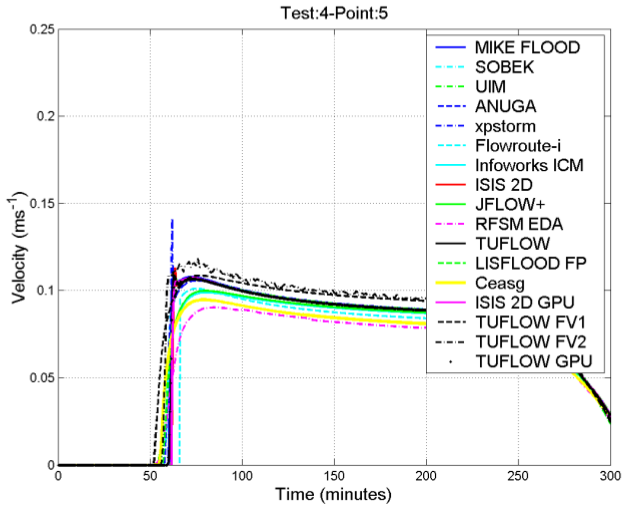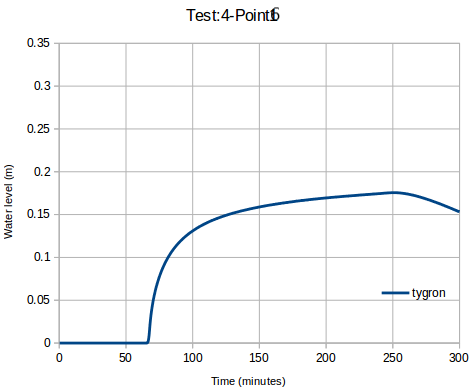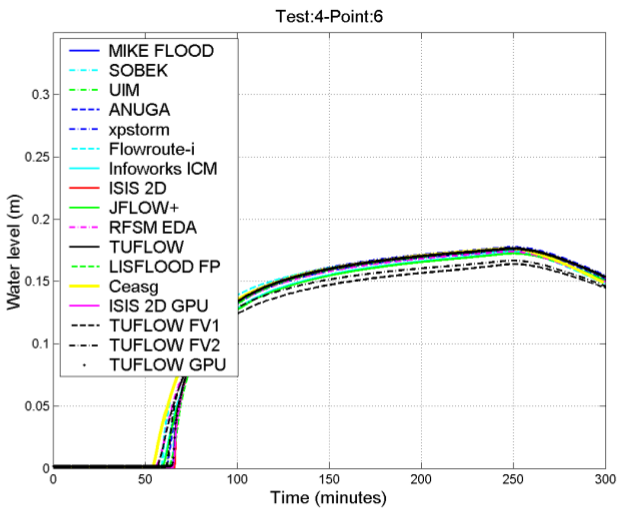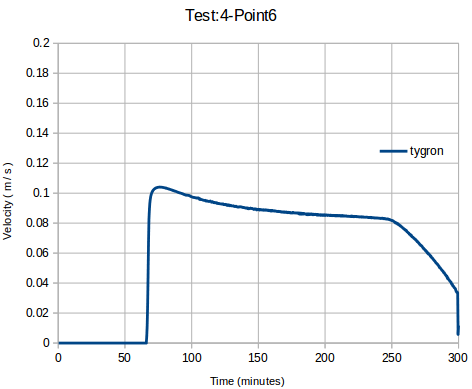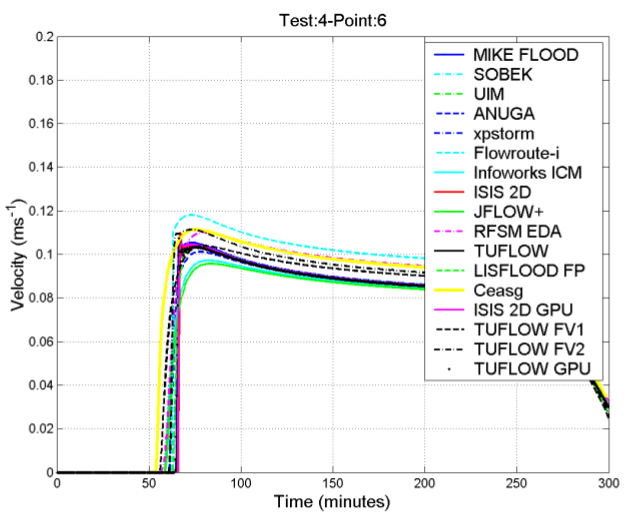UK EA benchmark 4 (Water Module)
This page reports on the performance of the Tygron Platform's Water Module by means of the UK EA Benchmark Test 4 – Speed of flood propagation over an extended floodplain.
The objective of this test is to assess the package’s ability to simulate the celerity of propagation of a flood wave and predict transient velocities and depths at the leading edge of the advancing flood front. It is relevant to fluvial and coastal inundation resulting from breached embankments.[1]
A copy of this test project is made available to everyone, providing hands-on insights to those interested. The project can be found on the LTS server under the name UK Benchmark 4.
Description
This test is designed to simulate the rate of flood wave propagation over a 1,000 x 2,000 m floodplain following a defence failure (Fig. (a)). The floodplain surface is horizontal, at datum (= 0 m). One inflow boundary condition will be used, simulating the failure of an embankment by breaching or overtopping, with a peak flow of 20 m3/s and time base of ~6 h. The boundary condition is applied along a 20-m line in the middle of the western side of the floodplain.[1]
Boundary and initial condition
- Inflow boundary condition as shown in Fig. (b)
- All other boundaries are closed
- Initial condition: dry bed
Parameter values
- Manning’s n: 0.05 (uniform)
- Model grid resolution (m): 5 (or ~80,000 nodes in the area modelled)
- Simulated time (h): 5
Required output
| Point ID | X | Y |
|---|---|---|
| 1 | 50 | 1,000 |
| 2 | 100 | 1,000 |
| 3 | 200 | 1,000 |
| 4 | 300 | 1,000 |
| 5 | 400 | 1,000 |
| 6 | 300 | 1,300 |
- Software package used: version and numerical scheme
- Specification of hardware used to undertake the simulation: processor type and speed, RAM
- Minimum recommended hardware specification for a simulation of this type
- Time increment used, grid resolution (or number of nodes in area modelled) and total simulation time to specified time of end
- Raster grids (or TIN) at the model resolution consisting of:
- Depths and at t = 30 min, 1 h, 2 h, 3 h and 4 h
- Velocities (scalar) at t = 30 min, 1 h, 2 h, 3 h and 4 h
- Plots of velocity and water elevation v. time (suggested output frequency: 20 s) at the 6 locations represented in Fig. (a) and provided as part of dataset
Dataset content
- Upstream boundary condition table (inflow v. time). Filename: Test4BC.csv
- Location of output points. Filename: Test4Output.csv
The model geometry is as specified in Section 2. No DEM is provided, as the surface elevation is level at datum (= 0 m).[1]
Technical setup
- Flat surface
- Grid-cell size (m): 5
- Area size (m): 1,010 x 2,010 (required domain of 1,000 x 2,000 + 5-m border)
- The measurement points were positioned correctly (see Fig. 1)
In order to regulate the boundary discharge according the hydrograph (Fig. 2), 2 inlets were implemented. Both inlets occupied one grid cell, one of these located above and the other below the green center line (Fig. 3). The inlets were configured as follows:
- External area (m2): 1,000,000,000 (default)
- Water level (m): 1 (default)
- Threshold (m): none (default)
- Inlet Q (m):
Results
Stats
- Software package used: Tygron Platform
- Numerical scheme: FV (Kurganov, Bollerman, Horvath)
- Specification of hardware used to undertake the simulation:
- Processor: Intel Xeon @2.10GHz x 8
- RAM (GB): 62.8
- GPU: 2x NVidia 1,080
- Operating system: Linux 4.13
- Time increment used: adaptive
- Grid resolution (m): 5
- Simulation time (s): 29 for 900 timeframes
- Object flow (m3/s): 283,723.8
- Remaining water volume (m3/s): 283,606.9
Raster grids (or TIN) at the model resolution for water level and flow velocity
Contours of inundation extent
Cross sections
Time series of water level and flow velocity
Notes
- The stepwise behavior seen in the velocity profiles can be related to the definition of the inlet inflow, which is also stepwise.
Public test project
A copy of this test project is made available to everyone, providing hands-on insights to those interested. The project can be found on the LTS server under the name UK Benchmark 4. In this project the discussed benchmark test is reproduced, based on a map size of 1,010 m x 2,010 m to compensate for the 5-m border cells. These special map dimensions are generally not selectable in the Wizard and require configuration through the API.
- The locations of the measurement points are:
| Point ID | X | Y |
|---|---|---|
| 1 | 50 | -1,000 |
| 2 | 100 | -1,000 |
| 3 | 200 | -1,000 |
| 4 | 300 | -1,000 |
| 5 | 400 | -1,000 |
| 6 | 300 | -700 |
Note that the coordinate system in this project differs from the one used during the actual benchmark testing as shown in Fig. (a). For the above listed points the center (0,0) is located at the top-left corner instead of the bottom-left, hence will the bottom-right corner have coordinates (1,000;-2,000).
References
- ↑ 1.0 1.1 1.2 Néelz, S., & Pender, G. (2013). Benchmarking the latest generation of 2D hydraulic modelling packages. Report: SC120002. Environment Agency, Horison House, Deanery Road, Bristol, BS1 9AH. ISBN: 978-1-84911-306-9. Retrieved from: https://www.gov.uk/government/publications/benchmarking-the-latest-generation-of-2d-hydraulicflood-modelling-packages





